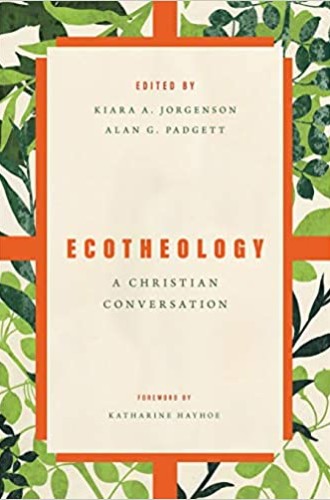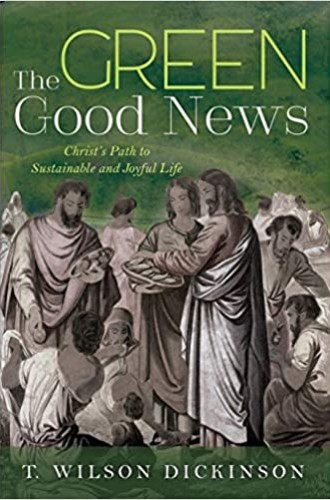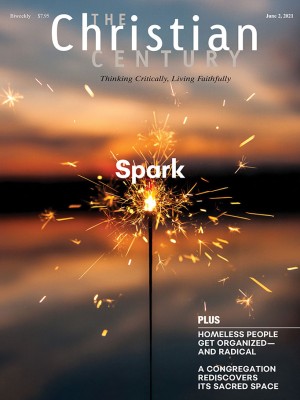Ecological ethics are resistant to simple, pious approaches, even more than other ethical considerations are. So we may be forgiven for approaching eco-theology monochromatically, as if there were only one shade of green. And it’s easy to see only one color when things feel intense. I keep seeing in my mind’s eye Greta Thunberg shouting at the United Nations Climate Action Summit, “How dare you! You have stolen my dreams and my childhood with your empty words!” A small voice inside me replies, But what can I do? It all feels so huge.
Of course we all know we can practice the kind of eco-pietism exemplified in the three Rs: reduce, reuse, recycle—simple and good stewardship-of-creation practices that live out the Genesis 2:15 dictum “to take care of it and to look after it” (CEV). But we also know our individual simple acts of eco-piety will never be sufficient to avert ecological disaster. And religious calls for eco-justice, for a Green New Deal, for global action that is big and consequential, can ring hollow when we individuals rarely live up to the demands in front of us—and when the magnitude of the crisis appears virtually insurmountable.
Read our latest issue or browse back issues.
Eco-theologians, as illustrated in these two volumes, are convinced that we still need to talk about eco-theology and to act. In the foreword to Ecotheology, Katharine Hayhoe puts it this way:
Talking may seem inconsequential, even trivial. But while most North Americans agree on the reality of climate change and the solutions to fix it, they still see it as a problem removed from their own lives. When people are asked, “Do you think this will affect you?” and “Do you discuss global warming, even occasionally?” the answer is a resounding no. Because if you don’t talk about something, why would you care about it? And if you don’t care, why would you act, or encourage others to, or advocate for the system-wide change we ultimately need?
Ecotheology models what it means to talk about it. Four scholars each offer an essay, to which the other three then respond. The conversation is broadly ecumenical, including a variety of Protestant and Roman Catholic perspectives.
The authors represent ways to move beyond monochromatic assumptions about eco-theology. Richard Bauckham’s opening essay is grounded in New Testament scholarship and considers eco-theology from the classical locus of Christian stewardship. Cynthia Moe-Lobeda considers eco-theology as eco-justice, taking a broader social and systematic approach. Steven Bouma-Prediger enters the conversation from the perspective of virtue ethics, considering the character of “earthkeeping.” Finally, John F. Haught looks at eco-theology proleptically, in an open sacramental perspective.
One of the great strengths of this book is the responses to each essay. Not only does reading them help consolidate an understanding of the central argument of each essay, the responses also illustrate how the various approaches enter into conversation with one another. There are not just four shades of green but many more. And sometimes, like Thunberg, the authors are hard on each other. This, in the spirit of avoiding disaster, is warranted. Sometimes you do have to shout.
Although I spent most of my formative Christian years understanding the stewardship motif to be the primary way of considering eco-theology, in my pastoral ministry I have especially leaned into the eco-justice perspective. With Moe-Lobeda, I recognize that those who are most impacted by climate change are also those least responsible for having caused it. For this reason, as a reader I resonated particularly strongly with her essay and the calls for a social justice approach. However, I’ve often wondered by what means the nations of the world, or the rich people of the world most responsible for the climate crisis, would ever wake up enough to actually do something.
Of all the approaches represented in the book, the one that appeals to me most strongly is the concluding essay, in which Haught reflects on hope and sacramentality. “Without playing down the ecological significance of the renewed interest in ecological theology by some of my fellow Christians,” he writes, “I want to ask whether Christianity’s vision of creation as the embodiment of divine promise is ecologically significant.” Hope for the world’s future, he believes, is the most irreplaceable of all biblical themes. And as a sacramental theologian who is hopeful, he suffuses this theme with visionary insight. “For all we know, this future will come to expression in modes of being, life, and consciousness whose shape we can barely imagine at present but for whose arrival we are ethically obliged to prepare.”
T. Wilson Dickinson’s The Green Good News: Christ’s Path to Sustainable and Joyful Life serves as a kind of handbook for the path into such an open and hopeful future. Dickinson refuses to cave to despair, asserting that the interconnected and complex set of problems facing us in the climate crisis has a beautiful and joyful set of responses.
The book is part personal testimony, part biblical devotional, and part clarion call to live out the green good news. In a way, Dickinson simply adds the word green to the Good News of Jesus and then runs with it. “The path of the cross leads to a new creation. Humans were made to keep a garden, and Jesus comes to restore our call and role as gardeners.” Well, that was easy enough. But I hadn’t thought of it before.
Having first read the essays in Ecotheology, I was prepared to tease out of Dickinson’s book the various colors of the palette. His hope-filled manifesto certainly resonates strongly with Haught’s sacramental imagination. But Dickinson also brings eco-justice and virtue ethics into the mix, arguing at multiple points that part of our lack of will around climate justice has simply to do with the reality that our lives are currently shaped by certain habits and time pressures that place limits on our ability to act justly.
In other words, Dickinson’s meditation on the green Good News both entangles us in the Good News as green—and also invites us to disentangle ourselves from ways of living and being that are still stuck in the old bad news that, for whatever reason, we first thought good. He is as clear-eyed as anyone that the hegemony of neoliberalism has led to the destruction of many forms of collective and individual action. In the last chapters he offers descriptions of various kinds of failure on his part that occurred because of the ways he was still wrapped up in the destructive powers.
Dickinson’s conclusion, then, comes as a kind of soft surprise. He focuses on shared meals and prayer:
We are also concluding the journey of this book with prayer, rather than a summation of practical advice or the formulation of a program, because this is the level of change that I see pursued in the Gospels and that seems appropriate for this time. Prayer—like organizing, gardening, teaching in parables, and dinner churches—is a practice embedded in daily life that is attentive to the contours of a place.
Like talk, prayer may seem inconsequential, even trivial. But if you don’t pray about something, why would you care about it? And if you don’t care, why would you act, or encourage others to?
A version of this article appears in the print edition under the title “Many shades of green."








